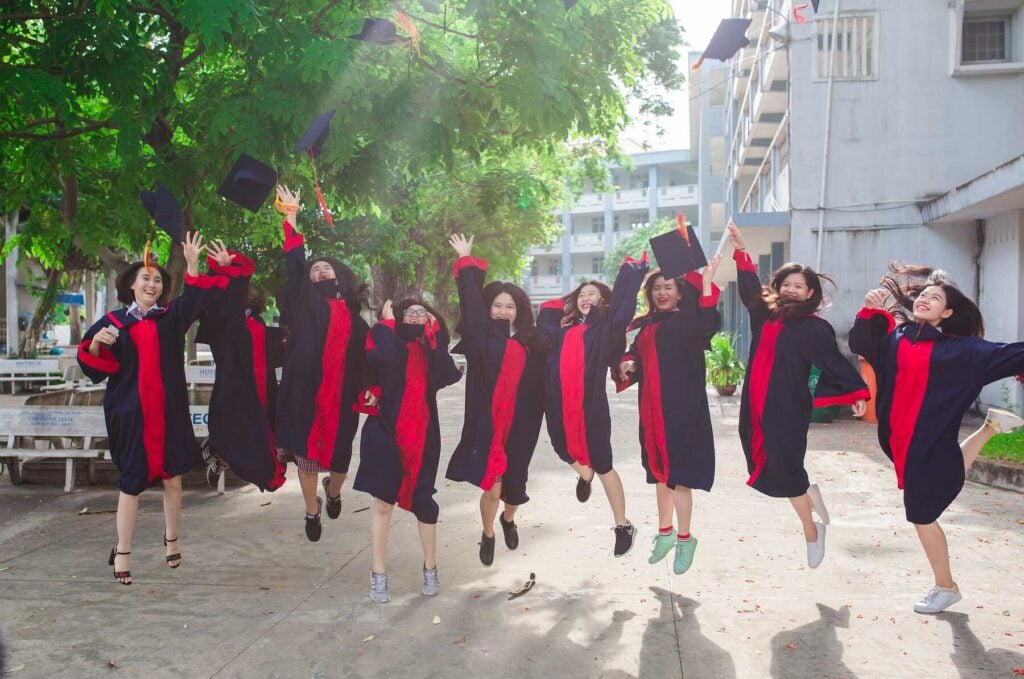10 Groundbreaking Graduate Research Collaborations

The world is built on a foundation of knowledge gained through research! While it is a scientific activity that can technically be done by anyone, certain realities call for the involvement of research universities.
Private institutions, government agencies, and universities collaborate on research projects in various research areas. They pool their technical expertise, resources, and facilities to reach common research goals. Today, research collaborations among research centers produce original knowledge and scientific breakthroughs.

Types of Research Collaborations
As mentioned earlier, three agencies conduct research: universities/academia, the private sector, and the government. Research collaborations among these sectors come in these types:
Intra-university collaboration
A university’s funding and endowment are finite, and they often set forth certain priority areas for research. These areas are often multidimensional or deeply nuanced, requiring multiple approach points. A university’s various colleges and departments often chip away together at a common multidisciplinary problem, bringing their respective institutional expertise to bear.
Inter-university collaboration
Much like intra-university collaboration, it is also common practice for universities to work together on a common research problem, often as part of larger research consortia. Some examples include the Sun-Grant Association and the Sea-Grant Program.
Collaboration with the Government
The government plays a key role in research in terms of providing overall policy direction, providing its facilities, and, most importantly, support through funding. Different government agencies provide support in areas that fall under their mandate, with some prominent example agencies being the National Institutes of Health, the National Science Foundation, the Department of Energy, and the Department of Defense.
Collaboration with the private sector
Universities also engage in multidimensional partnerships with the private sector. For example, universities and corporations may choose to partner up to work on a particular research problem.
The latter may also provide funding and material support; a university may enter into licensing agreements to let private sector agents market and produce their research and technology, or they may enter into similar special agreements.
International Collaboration
International collaboration among several agencies brings different levels of expertise, resources, and cultural perspectives to the table. They often deal with issues on a global scale, such as climate change, environmental degradation, transnational crime, and public health.
10 Groundbreaking Graduate Research Collaborations

Here are ten examples of graduate research collaborations between some of the country’s top universities and the government or the private sector that aim to make inroads into problem areas in various fields.
Our list is by no means exhaustive, and a quick trawl through various resources like government and university websites will yield many more examples.
University of Southern California (USC) and the National Institutes of Health
The University of Southern California (USC) partners with the National Institutes of Health in ongoing research into Alzheimer’s Disease through its Alzheimer’s Disease Research Center (ADRC).
The ADRC conducts long-term observational research as well as therapy studies in the areas of memory problems and aging, as well as assessing new treatments designed to prevent memory loss or find solutions and improvements. Its focus on Alzheimer’s Disease includes research on Cognition Measures and Alzheimer’s Disease prevention, potential links between cardiovascular & circulatory system health and Alzheimer’s, as well as a number of drug clinical trials.
Indiana University and the National Science Foundation
One of Indiana University’s ongoing research engagements is in the field of nanocrystals. This multi-institution research team is funded by the National Science Foundation through its Centers for Chemical Innovation (CCI) Program, based in the IU Center for Single-Entity Nanochemistry and Nanocrystal Design (CSENND).
The research team also consists of experts from Texas A&M University, UT Austin, and Temple University. CSENND’s first research phase is focused on nanocrystals for catalysis and chemical sensing.
University of South Florida, Elefo Biotech, and the WEC Project of South Africa
The NEWgenerator™ (Nutrients, Energy, Water) was developed by University of South Florida professor Daniel Yeh and his team and is a portable, off-grid water sanitation system. USF has an ongoing technology transfer & licensing agreement with Elefo Biotech in India and the WEC Project of South Africa for local manufacture and commercialization.
The NEWgenerator™ won the US Patent & Trademark Office’s 2020 Patents for Humanity Award.
University of Colorado Boulder and the US Department of Commerce
The University of Colorado partners with the US Department of Commerce’s National Institute of Standards & Technology in hosting the Joint Institute for Laboratory Astrophysics (JILA).
JILA is one of the country’s leading research institutions in the physical sciences, in cutting-edge areas that include Astrophysics, Biophysics, and Quantum Information Science & Technology.
One of JILA’s landmark achievements is being the first place to create the Bose-Einstein Condensate (in 1995) and the Fermionic Condensate (in 2003). These two are known as the 5th and 6th states of matter, respectively, and they and the technology used to create them have great potential applications.
Vanderbilt University and the National Institute of Health
Vanderbilt University, through the Vanderbilt University Medical Center, plays an ongoing central role in the National Institute of Health’s All of Us, a research program launched with the aim of utilizing research to improve health care.
All of Us is designed to develop a comprehensive database that is groundbreaking in breadth, depth, and diversity and can potentially inform thousands of future studies on various health conditions.
Vanderbilt University plays a key role as the program’s Data & Research Center, which is also utilized by Broad Institute (Massachusetts) and Verily (California).
University of Michigan and the US Department of Energy
The University of Michigan has an ongoing partnership with the US Department of Energy, supporting a wide range of research efforts that aim to address the country’s energy and sustainability needs & challenges. For FY2022 alone, the DOE’s support for University of Michigan research topped $43 million, and there are around 312 active projects supported by the department.
Some of the research highlights include the development of windows that use solar cells to generate power, as well as improvements in the design and efficiency of heat exchangers crucial to the country’s nuclear energy sector.
University of Georgia and Boehringer Ingelheim
The University of Georgia is credited for at least 850 research-derived products and technologies. This high rate of research and technology commercialization can be attributed to UGA’s provision of a wide range of opportunities and pathways for collaboration with various industry partners, as well as ample support for startups.
One of UGA’s longstanding partnerships is with Boehringer Ingelheim, a German multinational company. This partnership primarily covers the field of animal pharmaceutical products and spans not just pets and companion animals but production animals & livestock as well as wildlife. Boehringer Ingelheim also operates facilities at UGA, facilitating direct collaboration with UGA scientists.
Princeton University, the Department of Energy, and the National Oceanographic and Atmospheric Administration (NOAA)
Princeton University manages two National Laboratories: the Princeton Plasma Physics Laboratory (PPPL) of the Department of Energy and the Geophysical Fluid Dynamics Laboratory of the National Oceanographic and Atmospheric Administration (NOAA).
As part of its range of research collaborations, Princeton University also operates the Princeton Center for Complex Materials (PCCM), funded by the National Science Foundation as one of the country’s Materials Research Science and Engineering Centers (MRSEC) established back in 1994.
The PCCM’s current research directions explore quantum technologies and biology-inspired materials, specifically in the areas of Topological Quantum Matter and Disordered Macromolecular Structures.
University of Virginia and the National Institutes of Health
The University of Virginia, the lead institution of the integrated Translational Health Research Institute of Virginia (iTHRIV), is funded by the National Institutes of Health (NIH) as part of its Clinical and Translational Science Award (CTSA) Program.
UVA focuses on using advancements in the field of Data Science to accelerate health-related research.
University of Alaska Fairbanks, the Department of Energy, Hamilton-Maurer International, WorleyParsons, and the Sotacarbo Sustainable Energy Research Center
The University of Alaska Fairbanks is in partnership with the Department of Energy for gasifier and multiphase reactor research.
UAF also teamed up with a number of private companies, namely Hamilton-Maurer International, WorleyParsons, and the Sotacarbo Sustainable Energy Research Center, to explore the scalability of new, small-scale gasifiers.
Gasification-based power plants are designed to produce both power and heat, ideal for Alaska’s cold climate. An abundance of both coal and biomass in the state makes this setup ideal and goes toward the important goal of diversification of energy resources.




